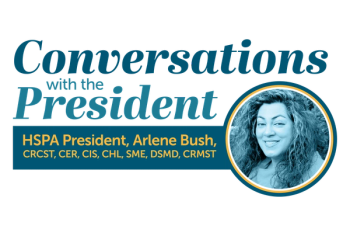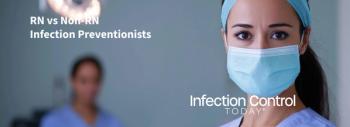The past few weeks, despite being over a year into the coronavirus disease 2019 (COVID-19) pandemic, have seemed particularly exhausting. The promise of growing vaccination rates has been challenged by concerns for third surges in Europe and worry that we could see that in the United States as states rapidly reopen. Throughout much of the news, from concern for the AstraZeneca vaccine efficacy to optimistic reports from the Ebola outbreak in Guinea, there were two stories that felt particularly impacting to the infection prevention world. The first was the big news last week that the Centers for Disease Control and Prevention (CDC) updated school guidance to reflect a smaller physical distancing requirement. The other is the increasing topic of vaccine passports and what they might mean moving forward.
Let’s unpack first, the new CDC guidance. A new guidance for schools reopening for in-person lessons, recommended that students in elementary, middle, and high school, should be three feet apart. This is of course a change from the six-foot physical distancing rule and for middle school and high school students, is OK if community transmission is not at a high level. When adults (teachers and staff) are interacting with students, they need to maintain six feet.
These new recommendations though, emphasize that universal masking is occurring, as well as attention to cleaning/disinfection, ventilation, and hand hygiene among other things. The CDC emphasizes that this guidance was shared based on several studies that have shown schools can reduce the physical distancing aspect of school guidance with other intervention strategies in place as “evidence from several studies suggests that children and adolescents may be less commonly infected with SARS-CoV-2 than adults.” The CDC notes that “although children can be infected with SARS-CoV-2, can get sick from COVID-19, and can spread the virus to others, less than 10% of COVID-19 cases in the United States have been among children and adolescents aged 5–17 years.” The heavy burden on schools to reopen with distancing has increasingly become an issue as it often prevents fully reopening full classrooms, which is complex topic and one that carries with it a lot of nuance. For infection preventionists (IPs) though, this update likely will drive questions around if we’ll be seeing similar guidance in adults or workplaces. It’s important to emphasize that this is specific to children due to epidemiological trends and a risk-matched approach with older children, but in all cases, all other interventions are required to be in place.
Vaccine Passports
The second hot topic right now is in relation to vaccine passports. Also known as vaccine passes, certificates, or even “green passes.” Many countries are employing or considering them for not only travel and quarantine purposes, but there is also a potential some employers might travel vaccination status. While this isn’t new to health care workers, the larger conversations around use of vaccination status to drive larger policies is one that carries with it a lot of complexities and conversations. From equity to legal and even operational challenges, vaccine passports and what they mean require larger conversations. Currently, CDC guidance still requires those vaccinated individuals to continue following infection prevention measures, like masking, when at work. As we learn more about sterilizing immunity and the prevention of asymptomatic infection, these recommendations could change, but with the growing conversation around vaccine passports, it’s important we work with staff to discuss the importance of continued infection prevention efforts.







